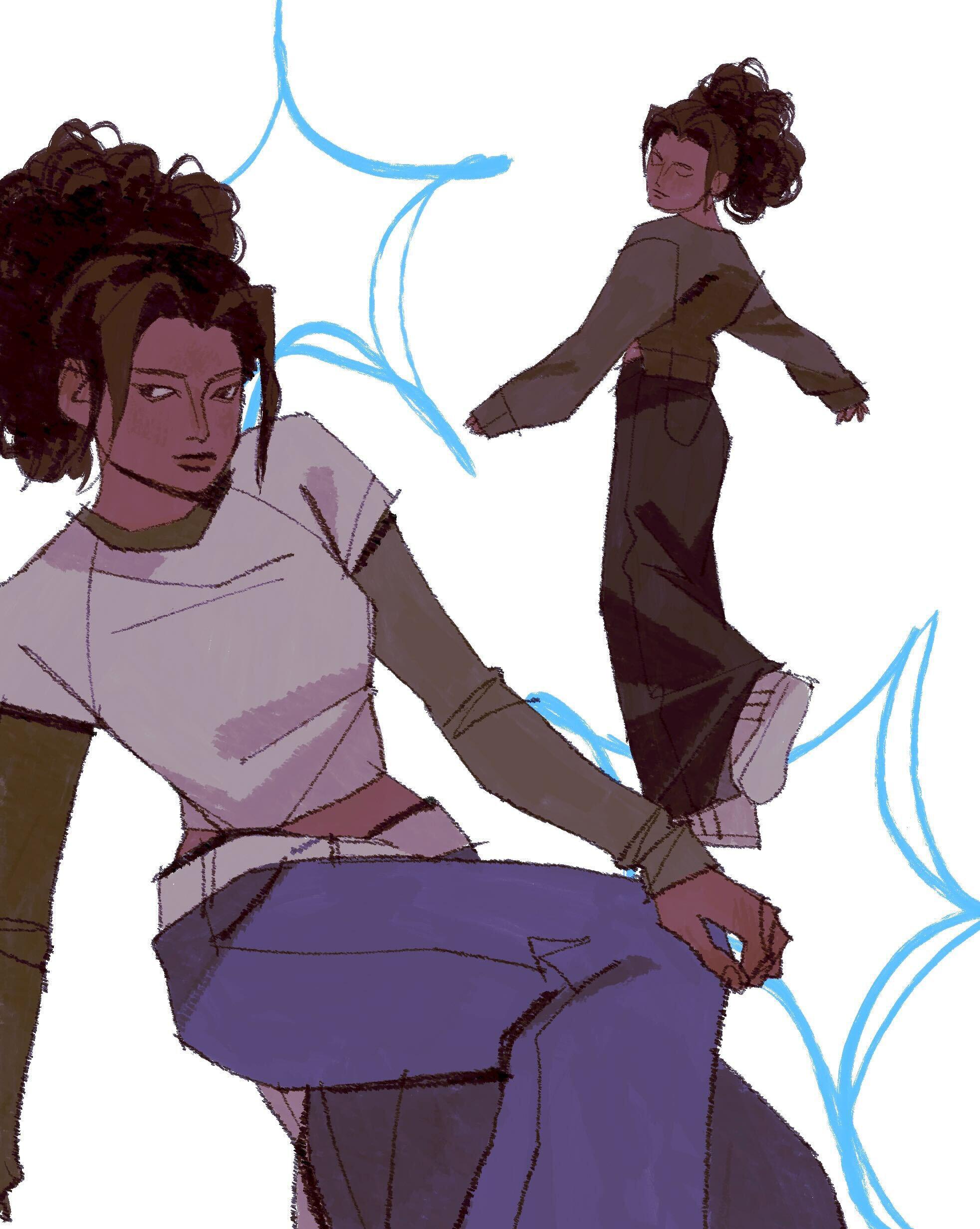
2 minute read
IT’S GIVING NOTHING
from Jerk March 2023
The history of “recession-core” and the return to minimalism.
Words by Lily Brooks and Chloe Langerman
Art by Kodah Thompson
Award show red carpets are typically a space for celebrities to blind anybody in a 10-mile radius with heaps of Swarovski crystals and then flirt with Miss “Chicken Shop Date” Amelia Dimoldenberg afterward. But at this year’s Golden Globes, that signature escapism fell flat. To the shock of Twitter users everywhere, hardly any looks featured necklaces. Thus began the “no necklace discourse,” and the conclusion that although rich people can afford to wear precious jewels in a recession, they are turning to minimalism to avoid a public stir.
This minimalism surge can also be chalked up to the move away from “dopamine dressing,” a phrase coined by fashion psychologist Dawn Karenn. Karenn says that wearing bright and flashy clothing– much like what was popular during the COVID-19 pandemic — can release dopamine and scientifically improve one’s mood. Nearly three years after the beginning of the pandemic, and with an international recession looming, people may be becoming disillusioned with playful fashion as the state of the world fuels anxiety.
A famous study done by Marjolein van Baardwijk and Philip Hans Franses took a look at skirt hemlines throughout the ages and noticed that they were shorter in times of prosperity and grew longer when the country was in economic trouble. For example, the 20s saw the look of the flapper girl and shorter dress styles and during the Great Depression, trends veered more towards modesty. Recently, the early 2000s were influenced by icons like Paris Hilton, who famously wore skirts the size of belts. This was followed by the 2010s, after the 2008 recession, when athleisure and hippie style took over. Maybe it’s our collective consciousness that draws us to dress modestly in modest times, but it doesn’t feel like a coincidence that the eccentricity of our quarantine days is being replaced with a more minimalist approach to how we dress. Social media, runways, and celebrity fashion are infiltrated with muted colors, androgynous silhouettes, and an absence of accessories. Kate Moss, Carolyn Basset Kennedy, and Olsen Twins aesthetics are back once again to inspire the elevated basic wardrobe that encourages sustainability and a “think before buying” attitude.
Although a recession is not something to celebrate, maybe there is a positive in people rethinking their relationship with their wardrobes. This mindset encourages buying pieces that fit your personal style instead of rushing to Shein to grab the newest fad and investing in elevated basics that will last many, many more recessions. It’s also important to not view minimalism as an excuse to trash your whole wardrobe and replace it with something that fits this “trend.” And when things get better economically, can we please remind ourselves how we now look back on microtrends from the past ten years and cringe?










